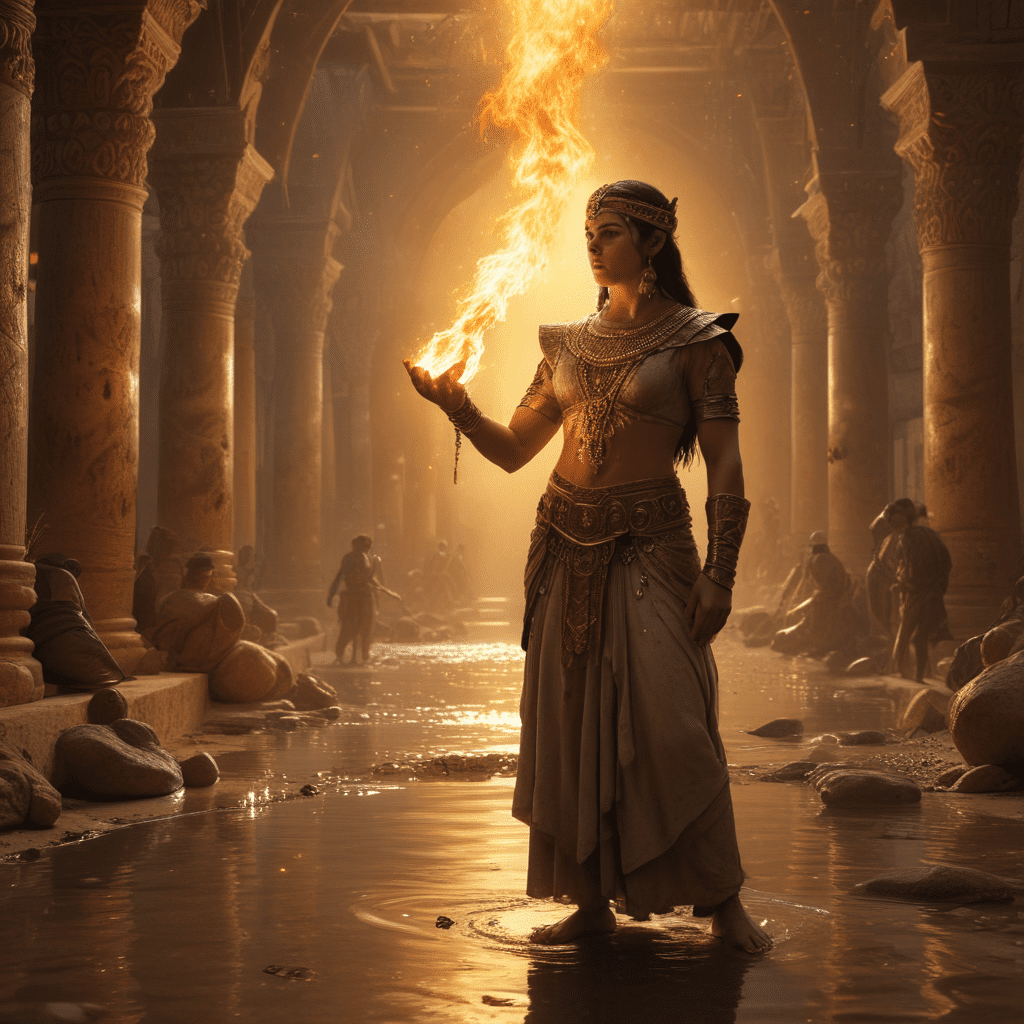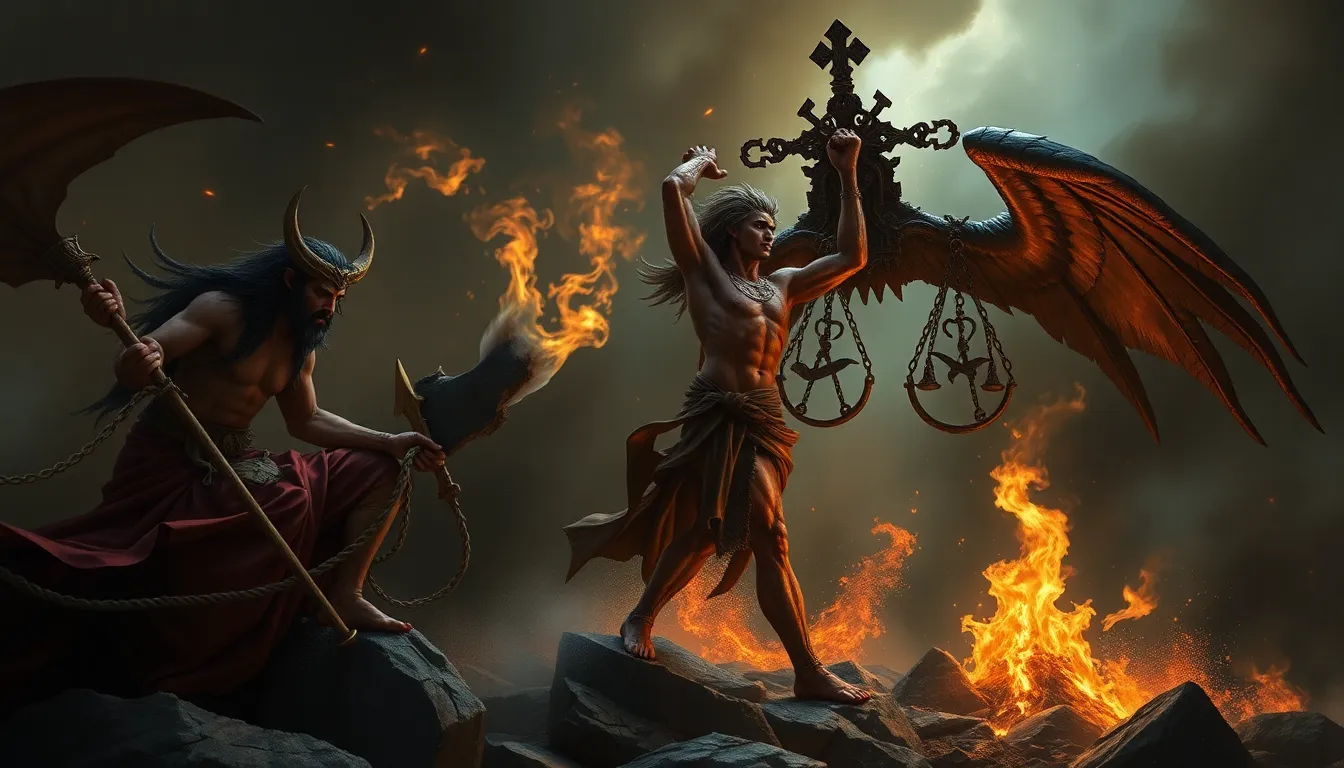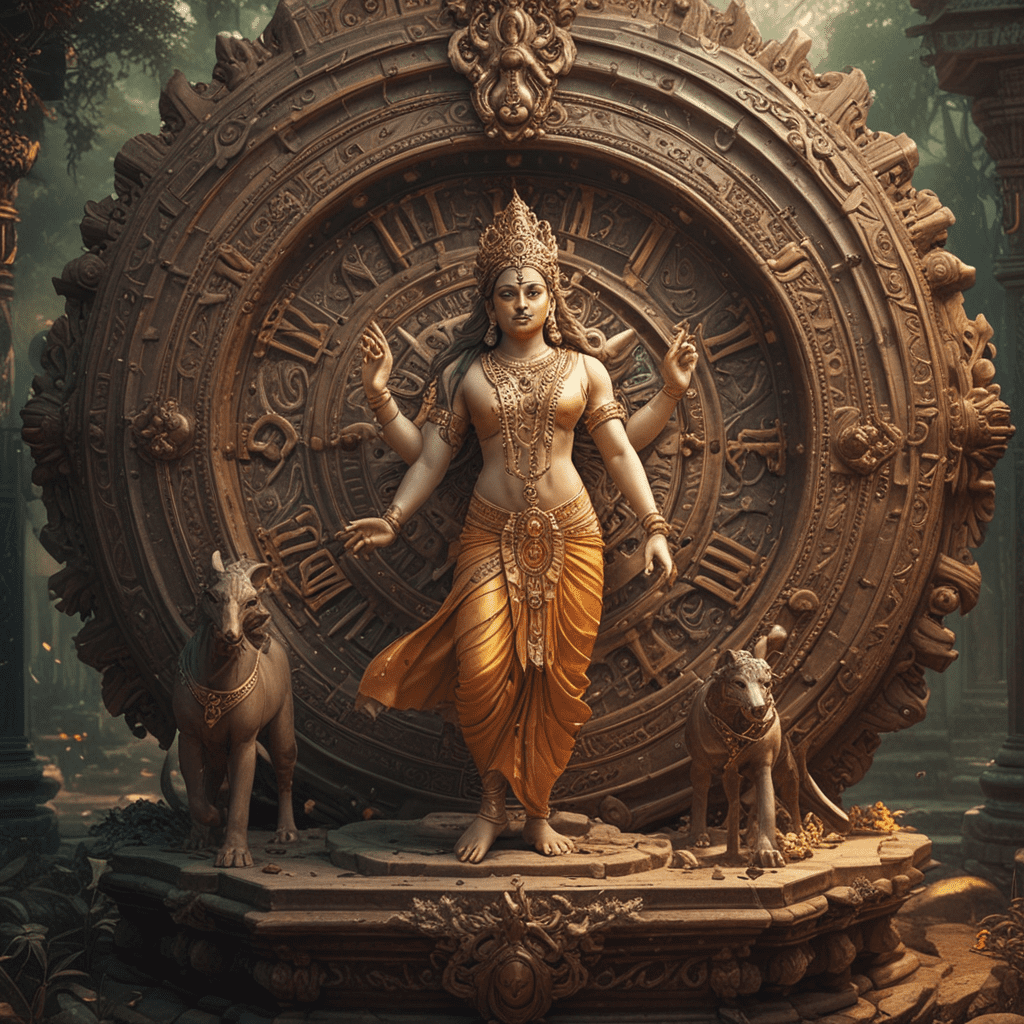The Role of Magic in Mesopotamian Mythology: Incantations, Spells, and Rituals
1. Introduction: Mesopotamian Mythology and the Realm of Magic
Mesopotamian mythology, the rich tapestry of stories and beliefs from ancient Mesopotamia, held magic in high regard. In this fascinating realm, magic was not merely a means of entertainment or spectacle, but a potent force that permeated every aspect of life. From healing the sick to protecting the vulnerable and influencing the will of the gods, magic played a pivotal role in shaping the Mesopotamian worldview.
This article delves into the intricate world of Mesopotamian magic, exploring its various forms, purposes, and practitioners. We will journey through the realm of incantations, spells, and rituals, uncovering the profound ways in which magic intertwined with the lives of the Mesopotamians. Prepare to be transported to a world where the spoken word held immense power, where rituals bridged the gap between the human and the divine, and where magic was not merely a belief, but a tangible reality.
2. Incantations and Spells: Words of Power and Influence
In the Mesopotamian belief system, words held immense power. Incantations, carefully crafted sequences of words, were believed to possess the ability to influence the course of events, heal the sick, and even control the forces of nature. These incantations were often uttered by priests and priestesses, who served as intermediaries between the human and the divine.
Spells, another form of verbal magic, were employed for specific purposes, such as warding off evil spirits, ensuring a successful harvest, or bringing about a desired outcome in a legal dispute. The precise wording and execution of these spells were considered crucial for their effectiveness. Scribes meticulously recorded these incantations and spells on clay tablets, preserving them for future generations.
3. Rituals and Practices: Connecting with the Divine and the Supernatural
Rituals played a central role in Mesopotamian magic, serving as a bridge between the human and the divine. These elaborate ceremonies often involved offerings to the gods, symbolic gestures, and the recitation of incantations. Through these rituals, the Mesopotamians sought to appease the deities, gain their favor, and influence their decisions.
Exorcism rituals were commonly performed to驱逐 evil spirits that were believed to cause illness, misfortune, and even death. These rituals often involved the use of potent incantations, specialized tools, and symbolic actions designed to banish the malevolent entities from the afflicted individual or dwelling.
4. Purposes of Magic: Healing, Protection, and Control
The purposes of magic in Mesopotamian society were multifaceted. Magic was employed for healing the sick, protecting individuals and communities from harm, and exerting control over one's surroundings. Healing rituals, often involving incantations and the application of medicinal herbs, aimed to restore health to the afflicted. Protective amulets and charms, imbued with magical power, were worn to ward off evil spirits and misfortune.
Love spells were used to attract a desired partner, while curses were employed to inflict harm on enemies. These diverse applications of magic demonstrate its pervasiveness and importance in Mesopotamian life.
5. The Practitioners of Magic: Priests, Priestesses, and Exorcists
The practice of magic in Mesopotamia was largely in the hands of specialized individuals, such as priests, priestesses, and exorcists. These individuals were highly trained in the intricacies of incantations, spells, and rituals. They served as intermediaries between the human and the divine, wielding the power of magic to influence the course of events and the will of the gods.
Priests and priestesses often held positions of authority and influence within Mesopotamian society. They were responsible for performing rituals, interpreting oracles, and communicating with the deities on behalf of the people. Exorcists, on the other hand, specialized in banishing evil spirits and malevolent forces. They were often called upon to deal with cases of demonic possession, illness believed to be caused by supernatural entities.
6. Magical Texts and Tablets: Preserving Knowledge and Rituals
The Mesopotamians meticulously documented their magical knowledge and practices on clay tablets, creating an extensive corpus of texts that provide invaluable insights into their beliefs and rituals. These tablets, often inscribed in cuneiform script, contained detailed descriptions of incantations, spells, rituals, and magical practices.
The tablets served as repositories of knowledge, passed down from generation to generation, ensuring the preservation of this esoteric tradition. They also provided a standardized framework for magical practitioners, ensuring consistency and fidelity in the execution of rituals and spells.
7. The Power of Belief: Faith and the Efficacy of Magic
The efficacy of magic in Mesopotamian society was deeply intertwined with the power of belief. The Mesopotamians held a profound faith in the power of words, rituals, and the supernatural. This belief imbued their magical practices with a sense of potency and efficacy.
The rituals and incantations were not merely empty gestures but were believed to harness the power of the divine, influencing the course of events and shaping reality. This unwavering faith in the power of magic contributed significantly to its enduring influence on Mesopotamian society.
8. Interpretations of Magic: Religious, Scientific, and Cultural Perspectives
The interpretation of magic in Mesopotamian society has been approached from various perspectives, including religious, scientific, and cultural. From a religious standpoint, magic was seen as a means of interacting with the divine, influencing the will of the gods, and seeking their favor.
Scientific interpretations have explored the potential psychological and sociological factors that contributed to the belief in magic. These perspectives suggest that magic may have served as a coping mechanism for dealing with uncertainty, illness, and the unknown.
Cultural interpretations have examined the role of magic in reinforcing social norms, maintaining order, and expressing cultural values. Magic was often used to legitimize authority, maintain social hierarchies, and punish those who transgressed societal norms.
9. The Legacy of Mesopotamian Magic: Influences on Later Cultures
The legacy of Mesopotamian magic has extended far beyond the confines of ancient Mesopotamia, influencing the development of magical beliefs and practices in later cultures. Elements of Mesopotamian magic can be found in the magical traditions of ancient Egypt, Greece, and Rome.
The concept of incantations, spells, and rituals has permeated various magical systems throughout history, demonstrating the enduring influence of Mesopotamian magical thought. The belief in the power of words and the supernatural continues to resonate with individuals across cultures and time periods.
10. Conclusion: Magic as an Integral Element of Mesopotamian Mythology
Magic played an integral role in Mesopotamian mythology, shaping the Mesopotamian worldview and influencing every aspect of their lives. From healing the sick to protecting the vulnerable and influencing the will of the gods, magic was a potent force that permeated Mesopotamian society.
The Mesopotamian belief in the power of words, rituals, and the supernatural gave rise to a rich and complex magical tradition that has left an enduring legacy on human thought and culture.
FAQ
What were the most common types of magic in Mesopotamia?
The most common types of magic in Mesopotamia were healing magic, protective magic, and love magic. Healing magic was used to treat illnesses and injuries, while protective magic was used to ward off evil spirits and misfortune. Love magic was used to attract a desired partner.
Who were the practitioners of magic in Mesopotamia?
The practitioners of magic in Mesopotamia were priests, priestesses, and exorcists. Priests and priestesses were responsible for performing rituals, interpreting oracles, and communicating with the gods on behalf of the people. Exorcists specialized in banishing evil spirits and malevolent forces.
What were the purposes of magic in Mesopotamia?
The purposes of magic in Mesopotamia were to heal the sick, protect individuals and communities from harm, and exert control over one's surroundings. Healing rituals aimed to restore health to the afflicted, protective amulets and charms warded off evil spirits and misfortune, and love spells attracted a desired partner.
How did magic influence Mesopotamian society?
Magic played a significant role in shaping Mesopotamian society. It reinforced social norms, maintained order, and legitimized authority. Magic was also used to punish those who transgressed societal norms.
What is the legacy of Mesopotamian magic?
The legacy of Mesopotamian magic has extended far beyond the confines of ancient Mesopotamia, influencing the development of magical beliefs and practices in later cultures. Elements of Mesopotamian magic can be found in the magical traditions of ancient Egypt, Greece, and Rome.



